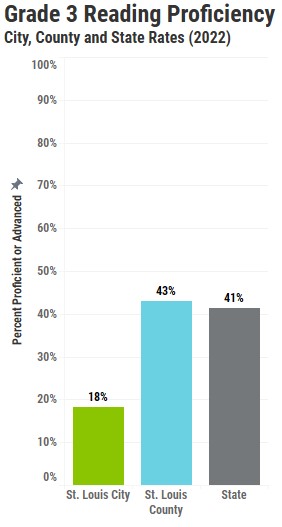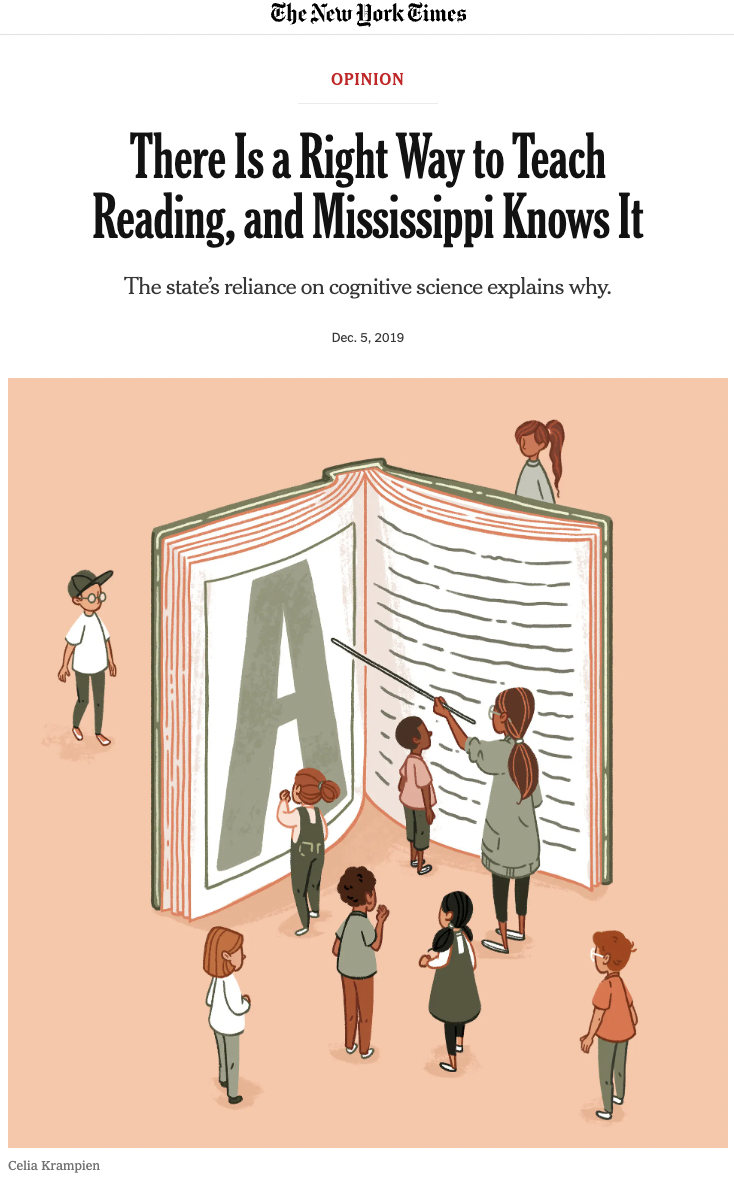3rd Grade Reading Proficiency
Milestones for Student Success
What it is

Third grade marks the final year children transition from “learning to read” to “reading to learn.”
Missouri determines whether children have met this milestone using mandatory state assessments for students in grades 3-8.
In third grade, the assessment covers literacy, informational reading, writing, language, and speaking and listening.
Students also are tested on skills such as comprehending, analyzing and evaluating fiction, poetry, and drama; comprehending and analyzing words, images, graphics, and sounds in various media and digital forms; and listening for a purpose.
Students who score proficient or advanced are considered to have mastered the content.
Why it matters
Students who cannot read by the end of third grade have difficulty making sense of curriculum in later grades.
- Research shows that nearly half of third graders reading below grade level – or not reaching proficiency – continue to struggle throughout school.
- One study found that third graders who aren’t proficient are four times more likely to not graduate from high school. Living in poverty increases the difference to six times.
- Research from University of Chicago shows that third graders reading below grade level will likely attend college at lower rates. Fewer than 20% of college students in the study were struggling readers as third graders, compared to 60% who were reading above grade level at that age.
6x
Low-income 3rd graders not proficient in reading are six times more likely to not graduate from high school than their peers who are proficient readers.
What the data tell us
Thousands of children in the St. Louis area and across Missouri finish third grade reading below grade-level. Data indicate the problem is getting worse.
- As of spring 2022, 41% of Missouri third graders were proficient in reading, down slightly from 42% in 2021.
- Third graders in St. Louis Public Schools and charter schools were less than half as likely in 2022 to be proficient readers than third graders statewide (18% versus 41%). Third graders in St. Louis County performed slightly above the state level (43% versus 41%).
- Considerable differences in performance exist within and among student groups. Fifteen percent of Black students in St. Louis City were reading on grade level in 2022 compared to 21% of Black students in St. Louis County.
Significant differences in performance exist within and between student groups. Just 10% of Black students in St. Louis City were reading on grade level in 2019 compared to 17% of Black students in St. Louis County. Low-income students and students with disabilities were less than half as likely to be proficient than their higher-income and general education peers in both St. Louis City and St. Louis County.
What we’re learning
Nationally, Mississippi stands out as an exemplar in improving early elementary reading proficiency. Since 2013, the state has provided funding to train teachers in the science of reading, which focuses on ensuring that students can both decode words and comprehend language.
Compared to states like Mississippi, Missouri’s ELA standards are inadequate under scrutiny, and have deteriorated over time. In fact, Missouri is the only state to have widened the gap between student proficiency on state tests and the National Assessment of Educational Progress (NAEP), a national exam that maintains a high benchmark for student proficiency.
Despite its basis in decades of research, many teachers and schools of education do not ground their instruction in the proven science of reading.
Too often, student texts and tasks do not reflect grade-level standards. In one large-scale study, grade-appropriate assignments were observed in classrooms just 26% of the time.
When provided with access to better instruction, underperforming students narrowed their learning gaps with peers. Those gaps narrowed even further when students were exposed to more grade-appropriate assignments.
“
For years, everyone assumed Mississippi was at the bottom in reading because it was the poorest state in the nation. Mississippi is still the poorest state, but fourth graders there now read at the national average. While every other state’s fourth graders made no significant progress in reading on this year’s test, or lost ground, Mississippi’s fourth-grade reading scores are up by 10 points since 2013, when the state began the effort to train its teachers in the science of reading. Correlation isn’t causation, but Mississippi has made a huge investment in helping teachers learn the science behind reading. – Emily Hanford, New York Times
Resource
The What Works Clearinghouse identifies nearly 50 distinct literacy interventions with rigorous evidence of effectiveness in improving literacy among K-3 students.

At the classroom level, research suggests at least three promising strategies for improving reading comprehension:
1. Teaching students how to apply reading comprehension strategies
2. Teaching students to identify and use the text’s organizational structure to comprehend, learn, and remember content
3. Establishing an engaging and motivating context in which to teach reading comprehension
How to improve
- Missouri can revise standards to ensure that all students have access to rigorous grade-level materials and are held to high expectations for reading proficiency.
- Missouri can invest in teacher skill building through specific early reading training.



